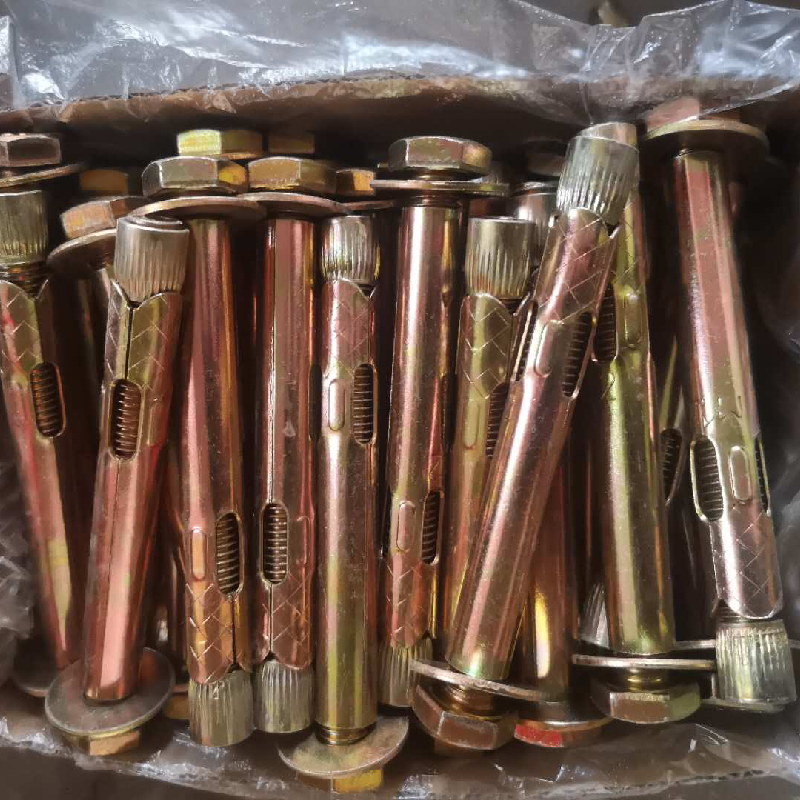Nov . 08, 2024 22:27 Back to list
Standards for Flat Washer Dimensions and Specifications in Mechanical Applications
Understanding Flat Washer Dimensions Standards
Flat washers are essential components used in various mechanical applications, serving multiple purposes such as load distribution, spacing, and preventing surface damage. While seemingly simple, the dimensional standards for flat washers are critical to ensuring compatibility and functionality in assembly. This article delves into the dimensions and standards associated with flat washers, highlighting their importance and common specifications.
What is a Flat Washer?
A flat washer is a disc-shaped piece of hardware, typically made from metal or plastic, with a hole in the center for a bolt or screw. Their primary role is to distribute the load of a fastener, reducing the risk of damage to the materials being joined and preventing the fastener from loosening due to vibrations. Despite their simplicity, the correct selection of flat washers is crucial in any construction or assembly project.
Dimensional Standards for Flat Washers
Flat washers come in various sizes and materials, and their dimensions follow standard specifications set by organizations such as the American National Standards Institute (ANSI) and the International Organization for Standardization (ISO). These standards ensure consistency and reliability in washer manufacturing, making it easier for engineers and technicians to select the right components for their applications.
Key dimensions specified in flat washer standards include
1. Inner Diameter (ID) This is the diameter of the hole in the center of the washer. The inner diameter is a critical dimension as it must correspond to the size of the bolt or screw being used. For example, a washer designed for a 10mm bolt will have an ID slightly larger than 10mm, allowing for proper fitment.
2. Outer Diameter (OD) The outer diameter indicates the overall size of the washer. The OD is primarily important for load distribution; a larger washer will spread the load over a wider area, reducing the risk of material deformation.
3. Thickness (T) The thickness of the washer affects its strength and ability to resist crushing forces. Thickness is chosen based on the application's load requirements and the materials being fastened.
4. Material Specifications Washers are manufactured from various materials, including steel, stainless steel, plastic, and aluminum. The choice of material impacts the washer's performance, corrosion resistance, and structural integrity under different environmental conditions.
5. Finish The surface finish of a washer can also affect its performance. Common finishes include plain, zinc-plated, and black oxide, each providing varying degrees of corrosion resistance and aesthetic appeal.
flat washer dimensions standard

Common Standards
The most widely recognized standards for flat washers include
- ANSI B18.22.1 This standard covers the dimensional specifications for flat washers in the United States, guiding manufacturers and users for proper washer selection.
- ISO 7089 This international standard specifies the dimensions of flat washers in metric sizes, allowing for global interoperability in various engineering applications.
Both ANSI and ISO standards provide charts and tables that detail the specified dimensions for each washer size, including corresponding inner and outer diameters along with thicknesses. This facilitates accurate selection and sourcing of washers for any project.
Importance of Selecting the Right Flat Washer
Choosing the correct flat washer is not merely a matter of convenience; it plays a significant role in the longevity and reliability of the assembly. An improperly sized washer can lead to several issues, including
- Preventing Load Distribution A washer that is too small may not effectively distribute the load, resulting in localized stress and potential material failure.
- Corrosion and Wear Selecting a washer made of inappropriate material for the application can lead to faster wear and corrosion, jeopardizing the integrity of the assembly.
- Vibrational Loosening In environments with significant movement or vibration, the right washer can prevent fasteners from loosening over time, ensuring the safety and reliability of the structure.
Conclusion
In summary, flat washers are more than just simple discs; they are vital components that ensure the integrity and longevity of mechanical assemblies. Understanding the dimensional standards and specifications of flat washers is essential for anyone involved in engineering or construction. By adhering to these standards, professionals can enhance the performance and safety of their projects while minimizing the risk of failure. Whether you're working on a small DIY project or a large-scale industrial application, always take the time to select the appropriate flat washer to achieve the best results.


